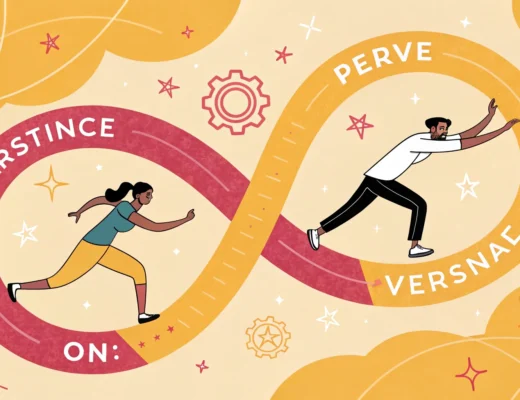Key Takeaways
- Always know your audience: Understanding who you are targeting is crucial.
- Keep messages clear and respectful: Avoid controversial topics that can be misinterpreted.
- Test campaigns before launch: Small focus groups can help identify potential issues.
- Be ready to adapt: If a campaign isn’t working, be willing to change it quickly.
- Learn from mistakes: Every failure can teach us something valuable for the future.
1. Pepsi Kendall Jenner Ad
 In 2017, Pepsi launched a commercial featuring Kendall Jenner to promote peace and unity. However, it quickly turned into a significant marketing fail. The ad showed Jenner leaving a photo shoot to join a protest, where she hands a can of Pepsi to a police officer, seemingly resolving the tension. This portrayal was seen as trivializing serious social issues, particularly the Black Lives Matter movement.
In 2017, Pepsi launched a commercial featuring Kendall Jenner to promote peace and unity. However, it quickly turned into a significant marketing fail. The ad showed Jenner leaving a photo shoot to join a protest, where she hands a can of Pepsi to a police officer, seemingly resolving the tension. This portrayal was seen as trivializing serious social issues, particularly the Black Lives Matter movement.
What Went Wrong
- Insensitivity: The ad was criticized for being tone-deaf and oversimplifying complex social issues.
- Backlash: Many people felt that the ad made light of real protests and struggles.
- Public Reaction: The outrage was swift, leading Pepsi to pull the ad and apologize.
Key Takeaways
- Understand Your Audience: Consider how your message will be received, especially on sensitive topics.
- Respect Serious Issues: Avoid using social movements for marketing gain; it can backfire.
- Test Your Ideas: Before launching a campaign, get feedback to ensure it resonates positively.
This incident reminds us that marketing should uplift and respect the values of the audience, not exploit them for profit.Ultimately, Pepsi’s attempt to connect with a social cause alienated many of its customers. This teaches us that authenticity and respect are crucial in marketing campaigns.
2. New Coke Fiasco
In 1985, Coca-Cola made a bold move by introducing a new flavor called New Coke. They thought they were being clever, but it was a huge mistake. After conducting taste tests with over 200,000 people, they found that 53% preferred the new recipe. However, when it hit the shelves, the response was shocking. Customers were furious! They flooded Coca-Cola with 400,000 calls and letters expressing their disappointment. Just 79 days later, Coca-Cola had to bring back the original formula, now called “Coca-Cola Classic.” This fiasco teaches us a valuable lesson: understanding your audience is crucial. People don’t just buy a drink; they buy memories and feelings tied to that drink. Here are some key takeaways from this marketing blunder:- Don’t underestimate brand loyalty: Customers have strong attachments to what they love.
- Test thoroughly: Short sips in a test don’t equal full drinks. Understand how people really feel.
- Be cautious with changes: If something works, think twice before changing it.
The New Coke incident reminds us that sometimes, if it ain’t broke, don’t fix it.In the end, Coca-Cola learned the hard way that its classic formula was more than just a drink; it was a part of its customers’ lives. This experience reminds all brands to listen closely to their audience and respect their preferences.
3. Colgate Frozen Dinner
 In 1982, Colgate made a surprising move by launching a line of frozen dinners called “Kitchen Entrees.” This was a big mistake! They thought people would want to brush their teeth with Colgate toothpaste after enjoying a tasty meal. However, the idea of mixing toothpaste with food just didn’t sit well with consumers.
Here are a few reasons why this marketing fail happened:
In 1982, Colgate made a surprising move by launching a line of frozen dinners called “Kitchen Entrees.” This was a big mistake! They thought people would want to brush their teeth with Colgate toothpaste after enjoying a tasty meal. However, the idea of mixing toothpaste with food just didn’t sit well with consumers.
Here are a few reasons why this marketing fail happened:
- Brand Confusion: Colgate is known for toothpaste, not food. Trying to sell frozen dinners, confused customers.
- Poor Market Research: They didn’t really understand what their customers wanted. People didn’t want to think about toothpaste while eating.
- Lack of Focus: Instead of sticking to what it does best, Colgate tried to enter a completely different market.
This case teaches us that sometimes, sticking to your core product is the best strategy.In the end, Colgate learned a valuable lesson about brand identity and customer expectations. They quickly pulled the product from the shelves, realizing that not every idea is good, especially regarding food and dental care!
4. Sony Black & White Ad
In 2006, Sony launched an ad for their new white Playstation Portable. The ad featured a pale woman grabbing a black woman by the face, with the tagline “White is Coming.” This image sparked outrage and was seen as racist by many. It’s crucial to understand how visuals can impact perceptions. Sony claimed they wanted to show the contrast of colors, but the execution missed the mark completely. Here are some key takeaways from this marketing fail:- Understand your audience: Always consider how your message will be received.
- Visuals matter: Images can convey messages that words sometimes cannot.
- Cultural sensitivity is key: Be aware of the cultural implications of your marketing materials.
This incident reminds us that marketing is not just about selling a product; it’s about connecting with people in a respectful way.In the end, Sony had to pull the ad and apologize, showing that even big brands can make mistakes when they don’t carefully consider their marketing strategies. The backlash was significant, and it serves as a lesson for all marketers: always think before you act.
5. Gap’s Failed Brand Design
In 2010, Gap made a big mistake by changing its logo without telling anyone. They had used their old logo for 20 years, and suddenly, it was gone. People were not happy about this change. The new logo, a bold black font with a blue square, just didn’t sit well with fans.What Happened?
- Backlash: Many customers disliked the new design and used social media to express their feelings.
- Satirical Responses: Some even created funny Twitter accounts to mock the new logo.
- Quick Change: Within just six days, Gap decided to return to its original logo because of the uproar.
Key Takeaway
This incident shows how important a brand’s logo and design are. A logo is often the first thing people see, and it needs to connect with them. If you change it, make sure you know your audience’s feelings.A logo is not just a design; it’s a part of a brand’s identity. Changing it without considering customer opinions can lead to disaster.
Lessons Learned
- Listen to Your Customers: Always pay attention to what your audience thinks about your brand.
- Test Changes: Before making a big change, test it with a small group to see how they react.
- Be Prepared for Feedback: Understand that not everyone will love your changes, and be ready to adapt if needed.
6. Adidas Boston Marathon Email
In 2017, Adidas made a huge mistake with an email sent to Boston Marathon participants. The subject line read, “Congrats, you survived the Boston Marathon!” At first glance, this might seem like a fun way to celebrate finishing a tough race. However, it was sent just a few years after the tragic bombing at the 2013 Boston Marathon, which killed three people and injured many others. This timing made the message feel very insensitive to many.What Went Wrong?
- Poor Timing: The email came too soon after a tragic event.
- Lack of Sensitivity: Many felt it was disrespectful to joke about survival.
- Immediate Backlash: People quickly expressed their anger on social media.
Being mindful of timing and context is crucial in marketing.In the end, this email taught how important it is to think before hitting send. Companies should always consider how their messages might be received, especially in sensitive situations.
Key Takeaways
- Always consider the context of your message.
- Be sensitive to past events that may affect your audience.
- Apologize quickly if you make a mistake, but learn from it to avoid future errors.
7. Facebook VR Puerto Rico Tour
In 2017, Facebook launched a virtual reality tour of Puerto Rico after the island faced a devastating hurricane. Mark Zuckerberg used the Facebook VR app to showcase 360-degree videos of the destruction and recovery efforts. The intention was to highlight how Facebook was helping with relief efforts. However, the execution fell flat. Many people felt that the tour was tone-deaf and made Zuckerberg seem insensitive to the suffering of those affected. Instead of showing genuine support, it appeared as if he was exploiting the disaster to promote Facebook’s technology.Key Takeaways:
- Understand the context: Always be aware of the current situation and how your message may be received.
- Be genuine: Authenticity matters. People can tell when a brand is being insincere.
- Listen to feedback: If your audience reacts negatively, take it seriously and adjust your approach.
This incident reminds us that marketing should be about connection, not exploitation.In the end, the Facebook VR Puerto Rico Tour teaches the importance of empathy in marketing. Connecting with your audience on a human level is crucial, especially during tough times. Highlight: Mark Zuckerberg’s attempt to showcase Facebook’s aid efforts backfired, leading to widespread criticism.
8. Snapchat Would You Rather Ad
 Snapchat faced a significant backlash with their ad for a mobile game called “Would You Rather?” This ad was not just poorly thought out; it was downright offensive. The ad asked users if they would slap Rihanna or punch Chris Brown. This was a huge mistake because it brought up a very sensitive topic: domestic violence.
Snapchat faced a significant backlash with their ad for a mobile game called “Would You Rather?” This ad was not just poorly thought out; it was downright offensive. The ad asked users if they would slap Rihanna or punch Chris Brown. This was a huge mistake because it brought up a very sensitive topic: domestic violence.
What Happened?
- The ad was seen as trivializing a serious issue.
- Rihanna, a victim of domestic violence, publicly expressed her disappointment.
- Snapchat quickly issued an apology, but the damage had already been done.
Key Takeaways
- Know your audience: Always consider how your content might be perceived.
- Avoid sensitive topics: Steer clear of issues that could offend or hurt people.
- Apologies may not be enough: Once trust is broken, it can be hard to regain.
In marketing, it’s crucial to be aware of the impact your words and images can have. A single misstep can lead to a public relations nightmare.
9. Starbucks Espresso Advertising
Starbucks launched a new product called “Blonde Espresso” to offer a lighter and sweeter option for coffee lovers. However, their advertising campaign didn’t hit the mark. The message was confusing, and many people could not understand what they were trying to say.What Went Wrong?
- The ad claimed that espresso didn’t have to be intense, which was a strange message for a coffee brand.
- The bright yellow landing page was eye-catching, but the wording made it sound silly.
- Many customers were left scratching their heads, wondering what the ad was really about.
Key Takeaways
- Clear messaging is crucial: If your audience doesn’t understand your message, they won’t connect with your product.
- Avoid being too edgy or different; it can backfire and make your brand look foolish.
- Always test your ads with a small group before launching them widely to see if they resonate.
In marketing, clarity is key. If your audience is confused, they might just walk away.The complexity of its message overshadowed Starbucks’s attempt to introduce a new drink. With over 170,000 drink orders, the complexity of their offerings can slow down service and frustrate customers and staff. This shows that sometimes, less is more in marketing!
10. Dove Body Wash Commercial
 In 2017, Dove launched a commercial that aimed to celebrate diversity among women. However, it quickly backfired. The ad showed three women of different skin tones taking off shirts to reveal the next woman. This was meant to show that Dove’s body wash is for everyone. But many people saw it differently. They felt it suggested that a black woman could turn into a white woman after using the product. This led to a huge backlash, with many consumers boycotting Dove products. Dove had to act fast, removing the ad and apologizing for missing the mark.
In 2017, Dove launched a commercial that aimed to celebrate diversity among women. However, it quickly backfired. The ad showed three women of different skin tones taking off shirts to reveal the next woman. This was meant to show that Dove’s body wash is for everyone. But many people saw it differently. They felt it suggested that a black woman could turn into a white woman after using the product. This led to a huge backlash, with many consumers boycotting Dove products. Dove had to act fast, removing the ad and apologizing for missing the mark.
Key Takeaways
- Be careful with messaging. Always consider how your message might be interpreted. What seems like a good idea might not be received the same way by others.
- Understand your audience: Knowing your audience is crucial. Dove’s intent was to promote inclusivity, but they missed the mark.
- Learn from mistakes: Dove later acknowledged their error and promised to improve their marketing strategies in the future.
Marketing is about connecting with people. If you miss that connection, you risk losing their trust.In conclusion, Dove’s body wash commercial reminds us that even well-intentioned campaigns can go wrong. Thinking critically about how different audiences will perceive your message is essential. This experience highlights the importance of creativity and understanding your audience in marketing. After all, engagement is key to success!
Conclusion
In the world of marketing, even the biggest brands can stumble. The stories of these marketing “fails” remind us that mistakes can happen to anyone, regardless of their experience or reputation. Each failure offers valuable lessons about understanding your audience, setting realistic goals, and crafting resonating messages. By learning from these missteps, we can avoid similar pitfalls in our own marketing efforts. Remember, the key to success lies in listening to your customers and adapting your strategies accordingly. With careful planning and a clear focus on your audience, you can create campaigns that succeed and build lasting connections.Frequently Asked Questions
What is the Pepsi Kendall Jenner ad about?
The Pepsi ad featured Kendall Jenner joining a protest and handing a Pepsi to a police officer. It aimed to show peace but was criticized for being insensitive.
Why did Coca-Cola’s New Coke fail?
Coca-Cola introduced New Coke in 1985, hoping to compete with Pepsi. However, people preferred the original flavor, leading to a quick return to Coca-Cola Classic.
What was Colgate’s Frozen Dinner mistake?
In 1982, Colgate tried to sell frozen dinners called ‘Kitchen Entrees,’ thinking people would buy toothpaste after eating them. It didn’t work out.
Why was Sony’s Black & White ad controversial?
Sony’s ad used a racially insensitive image, which upset many people and led to its removal.
What happened with Gap’s brand redesign?
Gap’s attempt to change its logo in 2010 was poorly received, leading to a public outcry and a return to the old design.
What did Adidas do wrong with their Boston Marathon email?
Adidas sent an email after the Boston Marathon bombing that seemed to ignore the tragedy, which upset many people.







